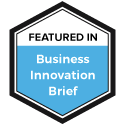
Creating Connection at Scale: Building a Purpose-Driven Community
Creating Connection at Scale: Building a Purpose-Driven Community
Authentic connection isn’t a “nice-to-have” — it’s the foundation of meaningful growth. But how do you foster that connection when your business spans two countries and 140+ locations?
On this episode of The Bliss Business Podcast, Vanessa Yakobson, CEO of Blo Blow Dry Bar, joined us to share how she’s scaling a purpose-driven franchise while preserving the human element at every touchpoint. What started as a single bar has grown into North America’s original and largest blow dry bar franchise. But the secret to Blo’s growth isn’t just business strategy — it’s culture, community, and care.
The Power of Purpose in a Service Brand
Vanessa’s journey to leadership wasn’t a straight line. With a background in marketing and nonprofit fundraising, she joined Blo ten years ago with a vision to grow the business while preserving its soul.
One of the most powerful insights from the conversation? “We’re not just in the beauty business,” Vanessa explained. “We’re in the wellness business. We make people feel wonderful — and that’s what they remember.”
At Blo, emotional connection is woven into the fabric of every location. From team camaraderie to personalized guest experiences, every bar is designed to deliver not just a service, but a feeling. Whether someone comes in for a quick blowout before work or a celebratory moment with friends, the goal is the same: make them feel confident, cared for, and seen.
Scaling Connection Across Franchises
Scaling connection might sound contradictory — but for Vanessa, it’s a matter of intention.
Franchisees are selected not just for operational competence, but for cultural fit. “They need to love building relationships,” Vanessa shared. “Because that’s what our business is built on.”
Franchisees are supported with tools like community engagement marketing, regular roundtables, best practice sharing, and hands-on support from the corporate team. “We bring the recipe and the ingredients,” Vanessa said, “and our franchisees bring their own flair.”
The result? A national brand that still feels personal at the local level.
Creating an Environment That Builds Trust
Blo Blow Dry Bar takes a meticulous approach to consistency across its network. Brand standards, training materials, digital tools, and regular feedback loops — including Net Promoter Scores and social review monitoring — ensure a unified guest experience.
But beyond processes, it’s the purpose that drives loyalty.
Vanessa shared countless examples of how franchisees use their locations to give back — from offering free services to cancer patients’ families, to supporting women preparing for job interviews. These aren’t PR stunts — they’re organic expressions of a brand rooted in empathy.
As Vanessa put it, “The businesses that thrive are the ones that weave themselves into the fabric of their communities.”
The Role of Leadership in Sustaining Culture
For Vanessa, leadership isn’t about command and control — it’s about understanding what franchisees and team members are trying to achieve and equipping them to get there.
That means supporting franchisees in their goals, helping team members develop professionally, and nurturing an inclusive culture that values emotional intelligence. “We lead with empathy because our success is completely tied to our franchisees’ success,” she said.
That mindset shows up in everything from personalized support to the way customer service is framed — not just as a transaction, but as a meaningful moment in someone’s life.
Final Thoughts
As Blo continues to grow, Vanessa is committed to staying grounded in the values that built the brand. “The goal is more of the same — just bigger and deeper,” she shared.
In a world where automation and standardization often dominate growth strategies, Blo Blow Dry Bar is proving that heart still scales. Through intentional leadership, community engagement, and a deep understanding of human connection, Vanessa Yakobson is showing how to grow with purpose — and grace.
Check out our full conversation with Vanessa Yakobson on The Bliss Business Podcast.
Originally Featured on The Bliss Business Podcast Blog












Recent Comments